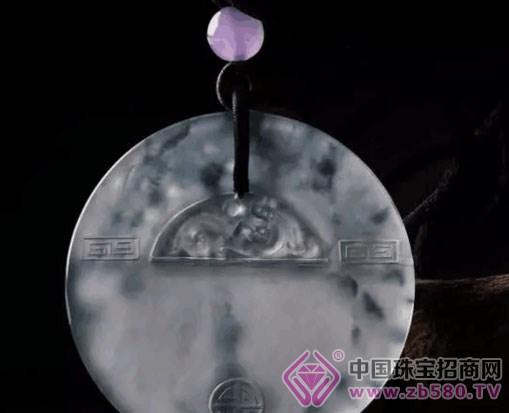In addition to water kinds of background work, there are a significant factor is the presence of flaws emerald is good or bad, it is currently in the emerald industry circles, emerald has flaws, we now have the knowledge, collectively speaking emerald These defects are found in finished products: cracks, greens, cracks, stone patterns (stone flowers), motley, black spots (dirty spots), and so on. But when customers and friends listen to us introducing these different flaws, they may have concerns when buying jade. At this point, our different people have different understandings of jade. Maybe some people think that cracks and variegated stones and stone flowers are the embarrassment, and some customers think that the emerald green is also awkward. In fact, we are buying jade jewelry ourselves, we should know that as long as we love it, it is good. As long as it has greatly affected the beautiful appreciation of jade jewelry, it is awkward; if it does not have much influence on jade jewelry, it is not awkward. Therefore, we should have a deeper understanding of other flaws that only affect the aesthetics.

Emerald texture - cotton
Jadeite is a polycrystalline aggregate of fibrous interweaving structure. The jadeite mineral contained in it has white reflection under light. We call this green, also known as fly wings. When these tiny reflective surfaces come together, they will appear in the naked eye as a point or linear white cotton-like shape, which we call cotton. In other words, cotton is the boundary line of the jade crystal particles. This is a unique feature of the jade.
It can be said that even the best jade is cotton, but the visibility of the naked eye is not the same. The thicker the crystal grains, the more obvious the cotton is. The transparency is also the key factor. The more transparent we are, the more we can see the cotton. If it is completely impervious, we can't see the cotton in the naked eye. Therefore, cotton does not affect the value of jade.
During the wearing process, as the human body sweat gradually penetrates into the middle of these boundaries and changes its refractive direction, it will become less obvious in the naked eye. Because the shape and intensity of cotton itself is not the same, so there is the saying that dead cotton live cotton, in fact, only to distinguish the length of time required for cotton visibility reduction, not to say that dead cotton will not be scattered, live cotton will be scattered. The dissipation of cotton is a very long process that requires everyone to face up to this problem. If you can expect to wear a completely opaque glass, it is estimated that it will be difficult to achieve even if it is passed down from generation to generation.
Jade scars - stone
Jade has undergone countless geological movements during its formation. Numerous times of extrusion, collision and pulling have caused the crystallization of the jade itself to be destroyed and cracks have formed. A part of the crack gradually healed with time and restored its original firmness, but left a scar. This is the healing crack, which we commonly call the stone pattern.
Stone pattern is also a very common phenomenon in jade, also known as the ten jade nine lines. In almost every piece of wool in natural wool, there are stone patterns. Here we have to say that the engraver's ingenuity is smart. They use wisdom and skill to avoid cracks and minimize stone streaks. Therefore, the stone pattern in the finished jade products we have seen is already unavoidable, and there is not much left.
Scars do affect aesthetics, but it is not a fatal injury to jade, which does not affect the firmness of jade. Many people mistakenly believe that the stone grain is easy to break. In fact, during the polishing process of jade carving, it has experienced the violent shock caused by the drill bit thousands of revolutions per second. If it is really vulnerable, it has already broken during the engraving process. If it is subjected to a strong impact, it will break even if there is no stone, and if it is not subjected to strong impact, there will be no cracks in the stone.

Emerald blood vessels - color roots
In the jadeite mineralization, there will be secondary colors invading the crystal lattice to form a beautiful color. If it is the part that enters the larger distance between the crystal lattices, the vein pattern that forms a darker color is the color root. Most of the roots are brownish yellow, dark green and even close to black. It seems to have some effect on the appearance of some of the finished products, but it is only the location where the colored elements are concentrated. It is said that the jade will be worn more and more green, that is, the chromium ions originating from the radix will gradually penetrate into the lattice gap, not to say that the white jade can be worn green. But this process is much longer than the dissipation of cotton.
Emerald cockroach - impurities
If secondary minerals invade the healing fissures, they will see spotted black matter. Most of these substances are divalent iron or ferric iron compounds. In fact, the iron in the impurities is very beneficial to the human body. Although it may affect the appearance, it actually has a good health effect.
The spiritual manifestation of jade is that it is unique, and it is also reflected in these places that are very similar to the human body. There is no perfect person, jade is not finished, and it is very necessary to face up to the so-called jealousy. Only by looking at these things in order to better understand jade, can we choose the most suitable jade.
Rayon Maxi Dress,Rayon Sundress,Rayon Summer Dresses,Casual Rayon Dresses
ShaoXing Siyi Garment co.Ltd , https://www.siyigarment.com